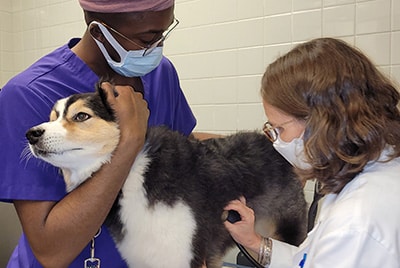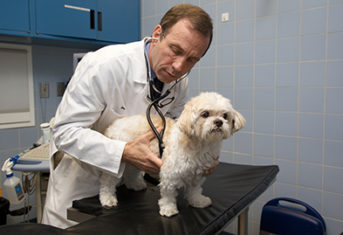The Truth About Vital Signs: What Pet Owners Need to Know

The Truth About Vital Signs: What Pet Owners Need to Know
Just like humans, animals have measurable vital signs that indicate their body’s overall functioning. These vital signs include breathing rate, heart rate, temperature and blood pressure. Patients with abnormal vital signs might be considered unstable and urgent steps will be taken to return the heart rate or breathing rate to normal. Illness and injury are the most recognizable causes of irregular vital signs, but other factors can play a part as well. In this blogpost, I’ll review some recent research in the area of vital signs and explain how you might help your pet’s veterinarian obtain accurate vital sign measurements.
The White Coat Effect and Blood Pressure
The stress of visiting a veterinarian’s office can make our pet’s blood pressure soar. This is called the “white coat effect,” and if the increase in blood pressure rises to the hypertension range, then we say the pet has “white coat hypertension.” Researchers at the Western College of Veterinary Medicine in Saskatchewan compared the blood pressure of dogs and cats in their veterinary hospital to blood pressure taken at home by their owners. Not surprisingly, these scientists reported blood pressure was lower at home when compared to the veterinarian’s office, and a whopping 41% of patients had white coat hypertension.
To avoid white coat hypertension, the Schwarzman Animal Medical Center has several petMAP™ blood pressure devices that we lend to pet families to help diagnose hypertension and monitor its treatment.
The White Coat Effect and Heart Rate
The white coat effect has an impact on heart rate too. Veterinarians in Australia studied dog heart rates during a typical examination in a veterinarian’s office, starting in the waiting room and recording at multiple times during the visit. Some dogs had heart rates as high as 200 beats per minute, and these dogs often showed signs of fear such as pinning their ears back or tucking their tail between their legs. This is why veterinarians have treat jars strategically located throughout their clinic! We want your pet to like us and our office.
My pet’s nose is warm – does that mean they’re sick?
It is not uncommon for a worried pet owner to call me and describe the temperature of their pet’s ears, nose or tummy. However, this is not an accurate measure of your pet’s temperature, according to research. Emergency and Critical Care veterinarians from several different practices set out to disprove this old wives’ tale by comparing standard rectal temperature to nose temperature in dogs seen in emergency rooms. The nose temperature was assessed with a finger on the nose, just as pet owners do, and also using a special technique called thermography. The study’s authors definitively state in their results: “Tactile assessment of nose temperature is inaccurate.”
How can pet owners help measure vital signs?
Based on what I’ve described above, here are some helpful tips to ensure accurate and consistent vital sign measurement in your pet:
- Follow your veterinarian’s recommendations for home blood pressure monitoring. With a little practice, you will become an expert.
- Get a rectal thermometer and some petroleum jelly and learn to use them to take your pet’s rectal temperature.
- Help your pet overcome their fear of the veterinarian’s office. Stop by for a treat when you don’t have an appointment. If the other pets in the waiting room rev your pet up, ask to wait in a separate area until your veterinarian is ready to see you.

































